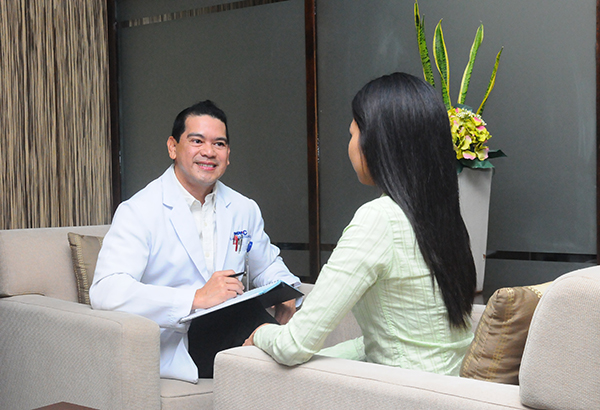Henry Wadsworth Longfellow, America’s most loved 19th-century poet, wrote: “Every man has his secret sorrows which the world knows not; and often times we call a man cold when he is only sad.”
This disturbing confession is enough to tear your heart to pieces: You look in the mirror/You cry/You think you are ugly/You think you are fat/You want to die/And the worst thing is,/the next day,/it happens all over again.
Have you ever asked yourself, “What is happy and where can I download it?”
Looks, indeed, can be deceiving. As somebody painfully admits, “I may look alive outside, but I’m dying on the inside.”
Don’t you sometimes feel sad and you just don’t know why and you don’t know what to do?
On a long, lonely night, you curl up in bed, close eyes, try to sleep and hope you never wake up.
Depression — it’s probably one of the saddest words in the dictionary.
“This condition is called Seasonal Affective Disorder (SAD) and it occurs more frequently in countries with fall and winter seasons, when the days are shorter and the nights, longer,” defines Dr. Edgardo Juan Tolentino Jr., consultant, Section of Psychiatry, Makati Medical Center and past president, Philippine Psychiatric Association.
According to the good doctor, the specific cause of SAD remains unknown. But factors that may come into play include:
• One’s biological clock (circadian rhythm). The reduced level of sunlight in fall and winter may cause winter-onset SAD. This decrease in sunlight may disrupt one’s body’s internal clock and lead to feelings of depression.
• Serotonin levels. A drop in serotonin, a brain chemical (neurotransmitter) that affects mood, might play a role in SAD. Reduced sunlight can cause a drop in serotonin that may trigger depression.
• Melatonin levels. The change in season can disrupt the balance of the body’s level of melatonin, which plays a role in sleep patterns and mood.
Dr. Tolentino affirms, “Yes, clinical depression or Major Depressive Disorder is believed to be caused by low levels of brain chemicals (neurotransmitters), including serotonin, norepinephrine, and dopamine.”
Somebody once said that the saddest thing about depression is that people who don’t have it just don’t get it. So, how can you tell if somebody is depressed?
Dr. Tolentino enumerates some symptoms of depression (clinical): Feeling depressed most of the day, nearly every day; feeling hopeless or worthless; having low energy; losing interest in activities you once enjoyed; having problems with sleeping; experiencing changes in your appetite or weight; feeling sluggish or agitated; having difficulty concentrating; having frequent thoughts of death or suicide.
Dr. Tolentino is quick to stress, “It isn’t fair to just ‘look at a person’ and determine that he/she is manic-depressive. Bipolar disorder is a neurobiological illness and like all illnesses, proper assessment and the use of screening and diagnostic tools will help a clinician accurately diagnose bipolar disorder. It is probably the most complex psychiatric disorder to diagnose and treat, so a proper assessment should be done.”
Do children get depressed, too? What are the signs a child is depressed?
“Children manifest depression differently from adults,” replies Dr. Tolentino. “Should a child be observed to be showing signs of depression, it is best to have the child be seen by a mental health professional.”
Yes, patients with bipolar disorder could come from all age groups, but it usually starts at a younger age.
The sad thing is, according to Dr. Tolentino, “like other chronic and potentially relapsing illnesses such as diabetes or hypertension, there’s no permanent cure for bipolar disorder, but it is highly treatable with good adherence by patients.”
He elaborates, “Because bipolar disorder is a very medical and biologically-based illness, sustained treatment and follow-up with one’s health care professional is key to leading a normal life. It helps to get the support and understanding of family, friends and colleagues. It also helps to stay productive and healthy, managing one’s stresses, and learning the positive value of resiliency.”
So, how do we take care of our mental health?
Dr. Tolentino prescribes the following tips, which he personally practices and shares with patients:
1. Live a balanced lifestyle. Freud stated that you could never sit on a one-legged stool — it won’t keep you balanced; we need to balance our life among: work/study (productivity), love (relationships/support), and play (“me” time).
2. Be mindful. Live your moments. With so much competing forces grabbing our attention, and therefore sapping precious energy, we need to focus on the here and now. We can’t do much about the past and the future is still a fantasy, but the present is something very much within our control.
3. Maintain physical health to support emotional and mental health. Eat healthy, sleep well, and increase physical activity or exercise regularly. There are now studies that affirm that exercise can be effective for mild depression.
4. Be positive by thinking positively. Fill your emotional “bank” with memories of positive experiences. Focus on the glass half-full rather than on the half-empty portion. This trains the mind to be resilient. Our thoughts influence our feelings, which in turn can influence our behavior.
5. Manage your stress. Know what triggers your stress and what your individual red flags are (some experience nape pains, others gastric acidity, still others facial muscle twitching, etc.) so you can avoid triggers and utilize coping strategies.
6. Seek help. When things aren’t working out, it’s okay to ask for help. Seeking help is not a sign of weakness; rather, it’s a sign of strength. It’s OK to reach out and connect to one’s support system, be it friends, family or colleagues; or a spiritual adviser or a mental health professional — depending on the context of the problem at hand.


